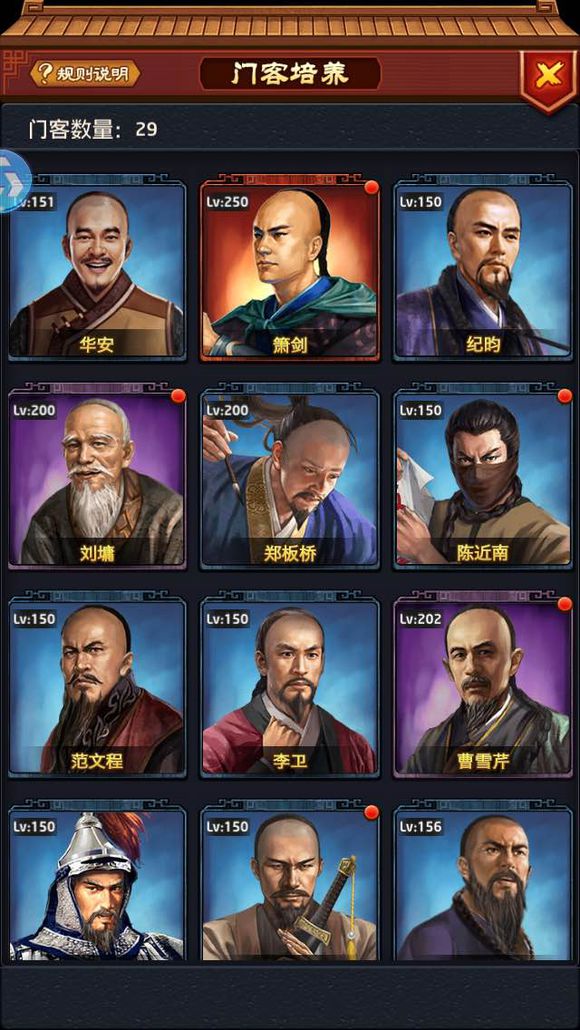After missteps in mobile, Intel is betting big on the next big shift in computing: The Internet of Things.英特尔当初错失了守住移动市场的先手,被AMD和高通铁环了空子。但眼下,英特尔决意豪赌计算出来领域的下一次大变革:物联网,让英特尔的芯片转入一切有形的物体。In June, Intel pulled back the veil on a number of significant advancements in processing technology. It introduced its next-generation Xeon Phi processor, a piece of technology that the company predicts will drive 20 percent annual revenue growth in its high-performance computing business in the next few years. It announced new architecture for its versatile Atom chip, found in everything from tablet computers to cars. And it offered an update to the myriad processor projects—Bay Trail! Merrifield! Avaton! Rangely!—in development.今年六月,英特尔(Intel)透露了一些处理器技术的重大进展。首先是发售了英特尔的下一代至强融核(Xeon Phi)处理器。

据英特尔公司自行估算,未来五年,这款处理器将给它的高性能计算出来业务带给每年20%的收益增长点。同时,英特尔还发布了Atom芯片的新架构。Atom可以说道是芯片界的万金油,从平板电脑到汽车,完全平常都是它大显身手之地。
另外,英特尔还对正在研发中的很多处理器项目(如Bay Trail、Merrifield、Avaton和Rangely等等)展开了升级。Much of this plays into Intel’s vision of the future, one that signals the company’s commitment to developing the so-called Internet of Things—and, perhaps more important, its intense desire not to miss out on another major shift in computing.英特尔的这番大手笔充份突显了它对未来的雄心壮志,以及它致力于研发所谓“物联网”的决意。更加最重要的是,它突显了英特尔绝不放弃计算出来行业另一次根本性变革的决意。
The world’s largest maker of semiconductors was, without question, a late entrant to the mobile computing space. Though Intel has historically dominated the supercomputing and personal computer markets, its lack of foresight (or timing) for the sudden and rapid growth of the mobile market allowed competitors like AMD and Qualcomm to steal market share in the fastest-growing computing arena. With PC sales declining—Intel derives some 70 percent of its revenues from the PC market—the chipmaker is certainly aware of its own mortality. It doesn’t plan to miss the boat a second time.虽然英特尔是全球仅次于的半导体产品制造商,但它在移动计算出来行业毫无疑问跟上较早。虽然英特尔仍然支配着超级计算机和个人电脑市场,但近年来由于对移动市场的忽然兴起缺少企图心(又也许是时机做到得很差),使得AMD和高通(Qualcomm)等竞争对手以求在这个较慢兴起的市场上每每地盗取不少市场份额。随着PC销量渐渐下降(英特尔有70%左右的收益来自PC市场),英特尔似乎早已意识到之后墨守成规的命运。
它不想第二次错失这条船。“We’ve seen the screenification of the world, and now we’re moving to computational power in the environment,” says Brian David Johnson, Intel’s resident futurist and principal engineer, of the transition from smartphone- and tablet-centric computing toward wearable technology and other new types of computing that comprise the Internet of Things. “Before, we had to ask ourselves, ‘Can we take a desktop and make it fit onto somebody’s lap? Can we take a laptop and make it small enough to fit in somebody’s pocket?’ The question was always, ‘Can we do it?’ But now, as the size of meaningful computing power approaches zero, you can turn anything into a computer. So the question now becomes, ‘What do we want to turn into a computer, and why?’”英特尔公司的未来学家、首席工程师布莱恩o大卫o约翰逊认为:“我们早已亲眼了世界的屏幕化,我们也在让我们的计算能力迎合这种环境展开改变。”也就是把以智能手机和平板电脑为中心的计算能力,向以可穿着技术和物联网技术为中心的计算能力改变。“从前我们曾多次回答过自己:‘我们可以把台式电脑增大到可以放到人们的膝盖上吗?我们能把笔记本电脑增大到能放在人们的口袋里吗?’当时问题总是‘我们能做吗?’但是现在,随着支撑最重要计算能力的芯片尺寸增大到完全可以忽略不计,大家完全可以把任何东西变为一台电脑。
因此现在的问题也就变为了:‘我们想要把什么东西变为一台电脑?为什么?’”Intel clearly expects the answers to that question to be vast and diverse. During the June announcement, Johnson and other company representatives drove home the idea that the possibilities for computing applications grow exponentially as the size of meaningful computing power approaches zero, creating opportunities for mobile computing that go far beyond the tablet or smartphone. Intel thinks 500 million pieces of wearable tech will be sold globally each year by 2020. Each will pack some degree of processing power to consume and create data. (According to Gartner research cited by Intel, all of that data will generate some $2 trillion in value.)在英特尔显然,这个问题的答案似乎十分普遍。在六月份的一份公告中,约翰逊和英特尔的其他代表们详尽阐释了随着支撑最重要计算能力的芯片尺寸增大到完全可以忽略不计,移动计算能力可以从平板电脑和智能手机发展到其它物品上的可能性。
英特尔公司指出,到2020年,全球每年将需要卖出5亿部可穿着设备。其中任何一台可穿着设备都具备一定的处置能力,消费、产生数据。
【据英特尔公司提到低德纳研究公司(Gartner)的数据,这些可穿着设备产生的数据所具备的价值将低约2万亿美元。)Key to Intel’s bid in the area are two new products, Galileo and Edison. The first is a $60 development board that is compatible with Arduino, the open source electronics prototyping platform popular with “makers” and other do-it-yourself tinkerers. The second is a tiny system-on-a-chip, roughly the size of an SD card, that can be integrated into consumer products to provide processing, memory, storage, Wi-Fi, and Bluetooth connectivity and compatibility with a range of pluggable sensors.英特尔对物联网领域的赌局主要集中于在两款新产品上,一款产品叫作“伽利略”,另一款叫作“爱迪生”。“伽利略”是一块售价60美元的开发板,可以与颇受DIY爱好者们青睐的Arduino开源电子原型设计平台相容。
“爱迪生”是一个小巧的系统芯片,虽然只有一张SD卡大小,但却可以构建到消费产品中,获取数据处理、存储、Wi-Fi、蓝牙功能,还可以与一系列即插式传感器相容。Galileo is notable because it allows someone to retrofit a disconnected electronic device to become connected and be controlled from a smartphone. It’s a capability that other controller boards already allow, albeit with different architectures. Edison takes the general concept a step further, Johnson says, by allowing product developers to use it in items such as clothing, smart watches, smart glasses, personal robots, and other Internet-enabled appliances and devices.“伽利略”之所以十分出名,是因为人们可以用它把一台无法联网的设备改装一台联网设备,然后用智能手机对它展开掌控。这个功能并不新鲜,市面上的其它控制板也能做,只不过基础架构全然不同。
“爱迪生”则把这个理念前进得加深了一步,使开发者可以把它用在衣服、智能手表、智能眼镜、私人机器人和其它需要联网的器具和设备上。If product developers take to Edison in a major way—”if” being the key word—it could put Intel out in front of its competition in the early days of the Internet of Things, a position the company has deeply coveted in the age of mobility. Better still, growth in Internet of Things technologies will also drive growth in Intel’s other major non-PC segments, a fact not lost on the company. More connected devices mean more data generated by those devices and the consumers that use them. More data means more data crunching, which means more processors needed to drive high-performance computing hardware as big data increasingly becomes a cornerstone technology for all kinds of enterprises.如果“爱迪生”出了产品开发者们使用的主流产品——当然只是“如果”——那么英特尔就将在物联网的早期发展阶段占到尽先机,这也正是移动时代以来英特尔仍然梦寐以求的局面。此外,物联网技术的发展还能增进英特尔其它非PC业务的快速增长。
联网的设备就越多,意味著这些设备产生的数据就越少,同时也意味著用于这些设备的人越少。更好的数据意味著必须更加强劲的数据处理能力。
另外,随着大数据更加沦为各种类型的企业的支柱技术,要造就大数据所需的高性能计算机硬件,大自然也就必须更好的处理器。This summer’s launch of Edison should provide Intel with an honest measure of whether the product designers already developing the wearable and embedded technologies that will populate the future will align their vision with Intel’s own. If they do, Intel could soon find itself powering any number of newly-connected devices that fall outside of the traditional computing markets. Which, Johnson notes, is exactly where Intel would like to be: inside.“爱迪生”在今夏的公布,让英特尔有机会老老实实地检验一下,想到那些早已在研发可穿着设备和嵌入式技术的产品设计师们的愿景否与英特尔自己的愿景完全一致。如果设计师们知道与英特尔一拍即合,那么英特尔的芯片旋即就不会加装在各种新型联网设备里,而这些新型设备终将远超过计算出来市场的范畴。
约翰逊认为,这正是英特尔想超过的目标——转入物联网。“We’re not a PC company, we’re not a tablet company, we’re not a smartphone company. We’re an intelligence company,” Johnson says. “We can bring intelligence to anything. To me, Edison and Galileo are the first expression of that vision.”约翰逊说道:“我们并不是一家PC公司,也不是一家平板电脑公司或智能手机公司,我们是一家智能公司。我们可以把智能带回任何东西上。
在我看来,‘爱迪生’和‘伽利略’就是这种愿景的第一次传达。
本文来源:澳门威斯尼斯wns888入口-www.tzssjj.com